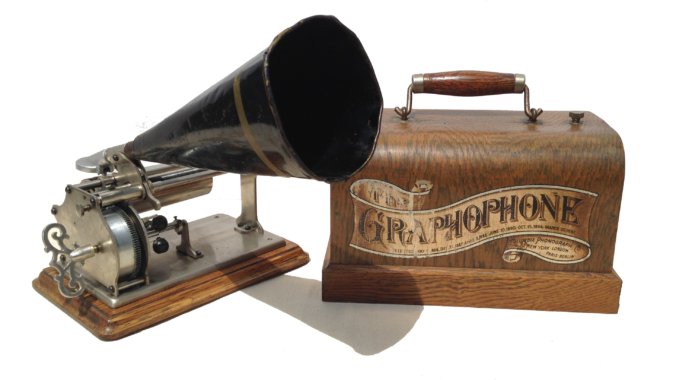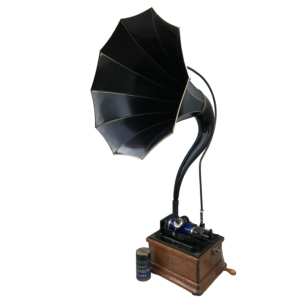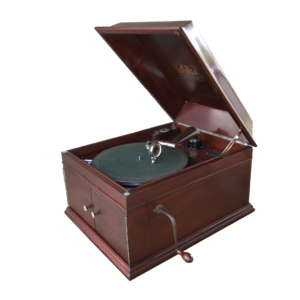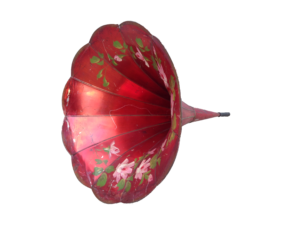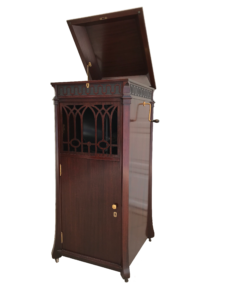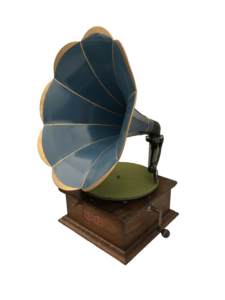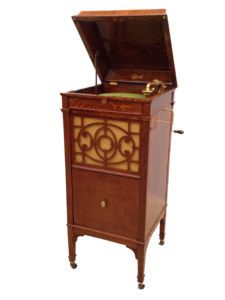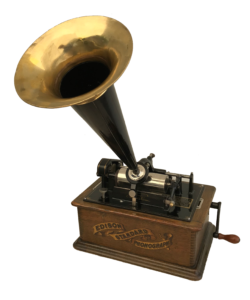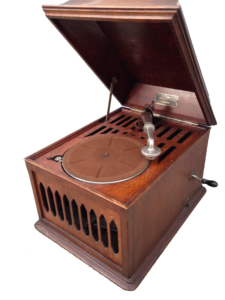Beginner’s Guide
In this section I’m going to cover some of the basic information and history. But before I start, I want to point out that there were numerous designs and manufacturers of record players in the past century; thus there are numerous, often incompatible, recording formats. Just like a cassette won’t play in a CD player, an Edison disc won’t play on a Victrola. Keep this in mind as we proceed.
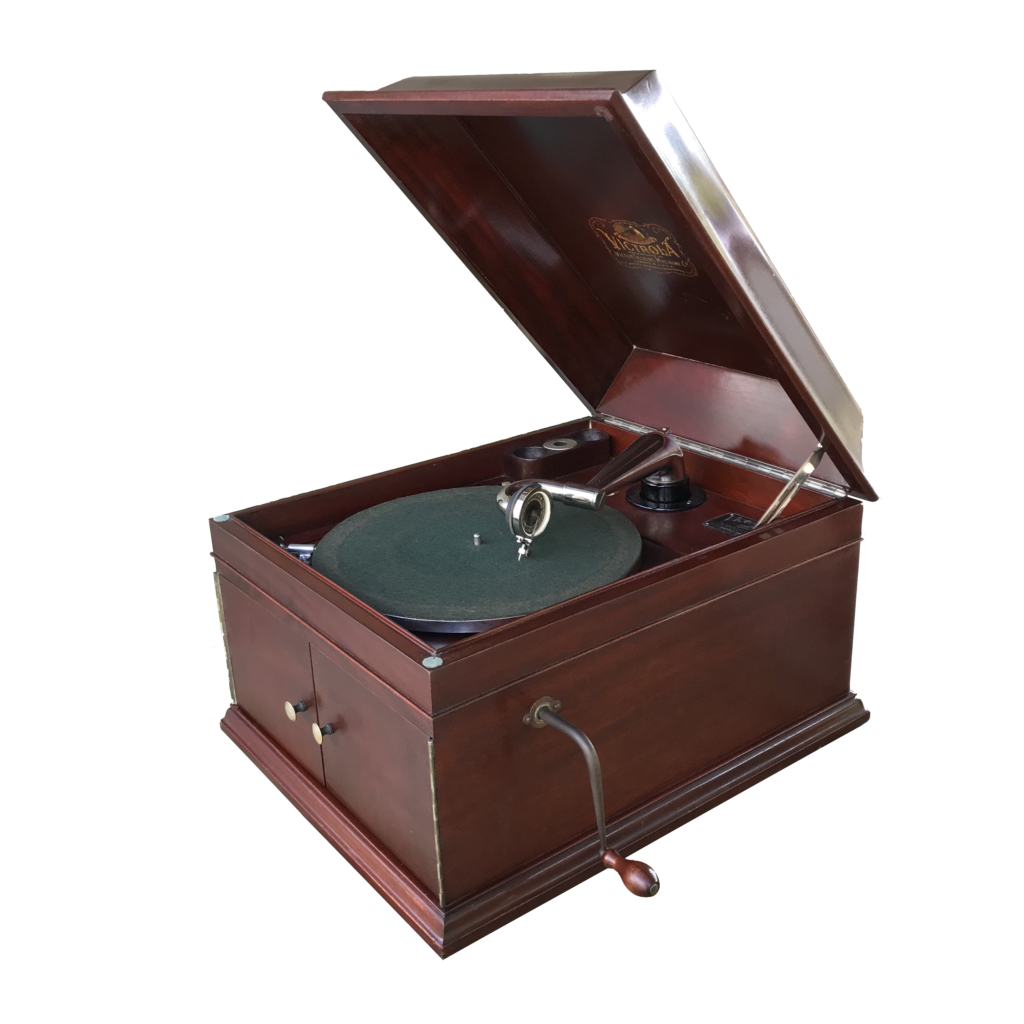
While technically the term, “Victrola,” only applies to machines with internal cabinet horns that were made by the Victor Talking Machine Co., the word is often used to describe any old wind-up record player. It’s popularity is understandable, as Victor dominated an enormous portion of the market during the acoustic phonograph era. Victor introduced the Victrola in 1906, effectively the first record player with a horn concealed inside the cabinet, with doors in front to control the volume. Previously, horns were usually made of metal or wood and mounted above the phonograph. These horns, while often decorative, took up space and were a burden to dust.
Victor Victrolas, Columbia Grafonolas (Columbia’s version of the Victrola), and countless other machines designed to play standard 78rpm records use steel needles. Steel needles are meant to be used to play ONE SIDE of a record and then discarded. Many new collectors are surprised to learn this, but it is essential to use new needles regularly to preserve your records and maximize sound quality. Old, used needles can and will degrade the grooves of a record very quickly.
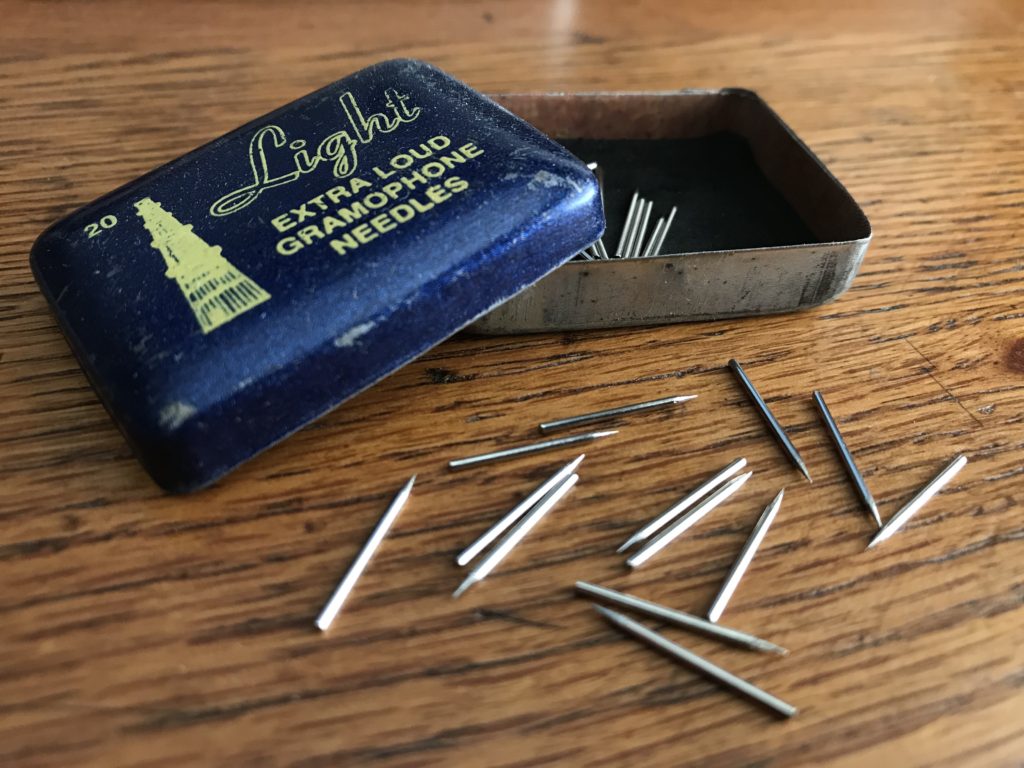
Luckily, there are manufacturers of new steel needles, and they are very affordable (usually $5 per 100 pack). Steel needles also come in a variety of volumes (commonly soft, medium, and loud). Soft tone is gentlest on your ears and your record grooves. I recommend loud tone needles mostly for dancing and the Fourth of July.
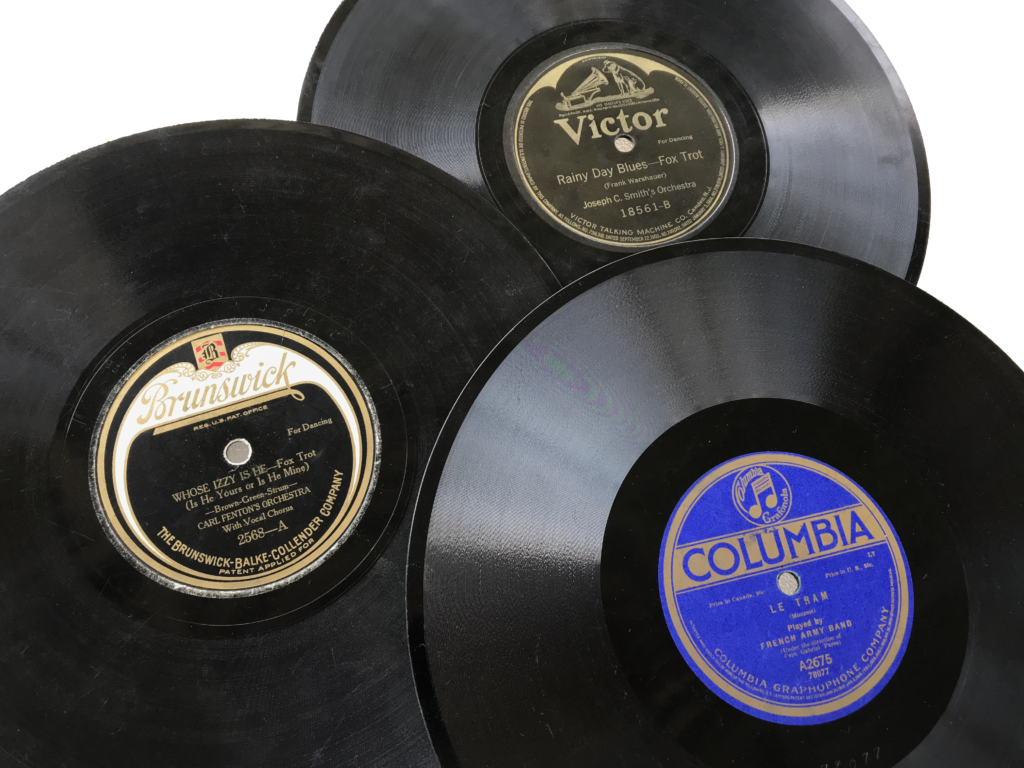
Typical acoustic 78s from the early 1920s
Unfortunately, you can’t play vinyl LP “33s” or “45s” on a Victrola without damaging the soft vinyl.
Most acoustic phonographs, like the Victrola, were designed to play what are generally called, “78s” (seventy-eights) by collectors. They play at 78 rounds-per-minute (or around that speed). 78s were made from roughly 1900 to 1960. It is best to play records from the same time period your phonograph was made or earlier. From the mid-1930s forward, technological advancements increasingly resulted in louder records pressed on softer materials. When played on an acoustic phonograph, many of these records will sound harsh and wear out quickly. “Grey grooves” is a common term to describe the phenomena of a record turning grey from excessive wear, old needles, or being played on an earlier, unforgiving machine.
Thomas Edison, inventor of the first practical phonograph in 1877, called the invention his personal favorite. Edison’s first phonographs did not use flat disc records; they instead used cylinders. The machines used permanent sapphire or diamond stylus points and listening tubes (similar to headphones) or external horns for reproduction.
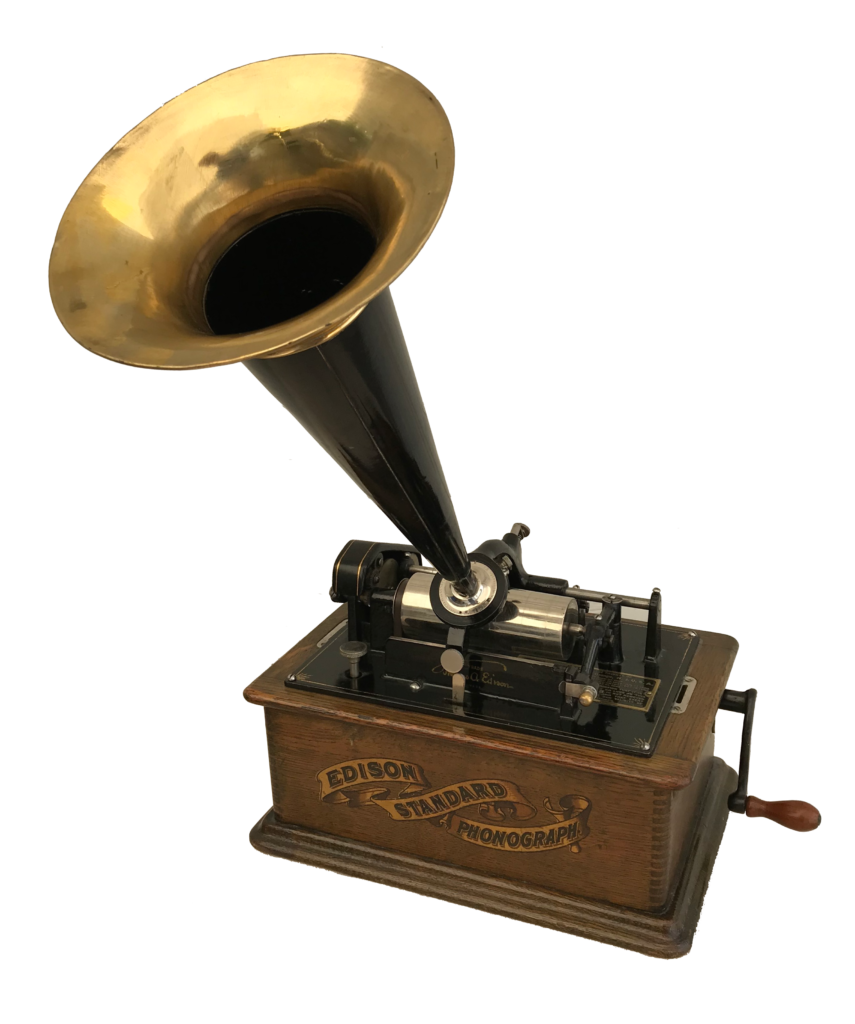
Early cylinders were made of wax- or soap-like compounds that could break easily but had technically better sound than contemporary discs. Cylinders could also be used for making recordings at home. At first, cylinders were approximately 2 minutes in duration. By 1908 Edison had released 4-minute cylinders, called “Amberol” cylinders, with finer grooves that were closer together, adding playing time. These were eventually made of a durable plastic-like material called celluloid. Cylinder phonographs can be found equipped to play 2-minute cylinders, 4-minute cylinders, or both.
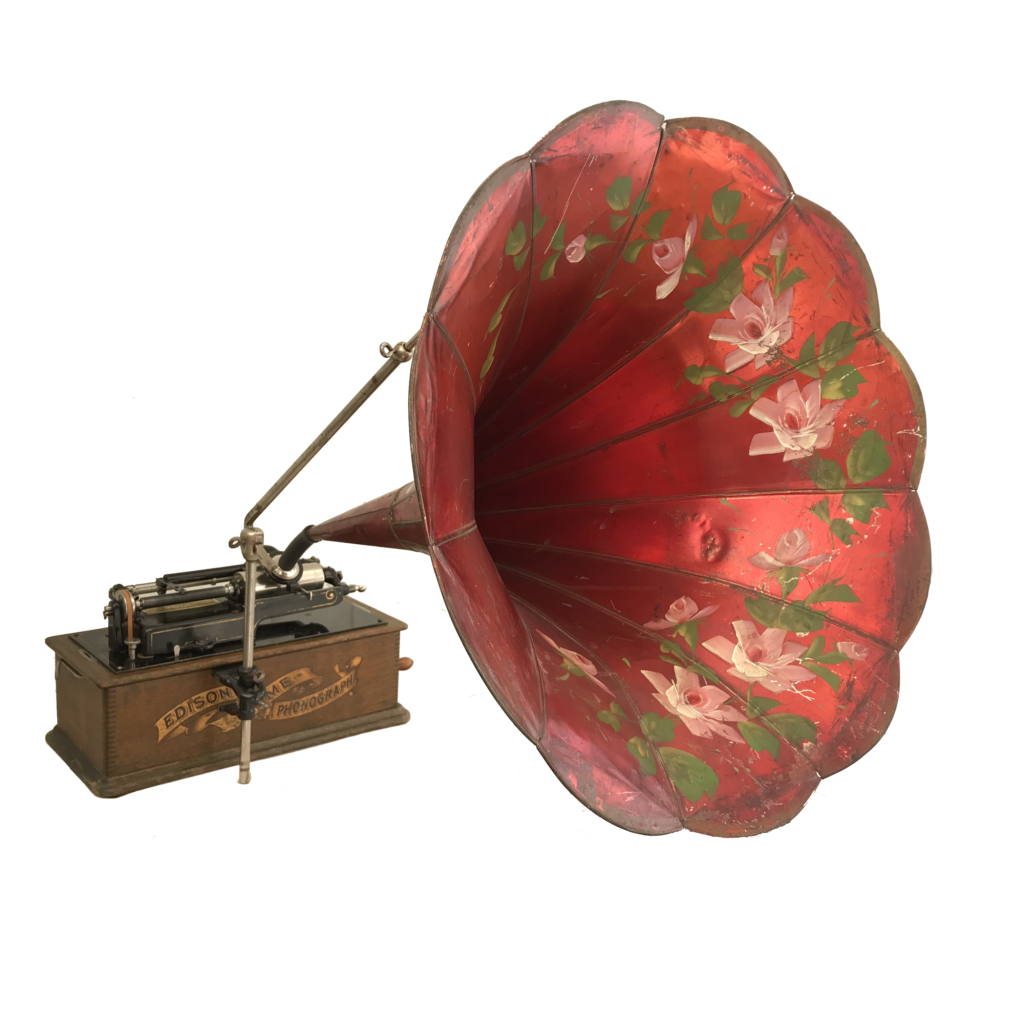
If you find wax cylinders, treat them with care. They break easily. Try not to touch the grooved areas. If you are not sure if your machine is meant to play wax cylinders, don’t attempt to do so. A machine set up to play 4-minute cylinders, with it’s smaller, sharper stylus, will destroy the earlier 2-minute wax cylinders.
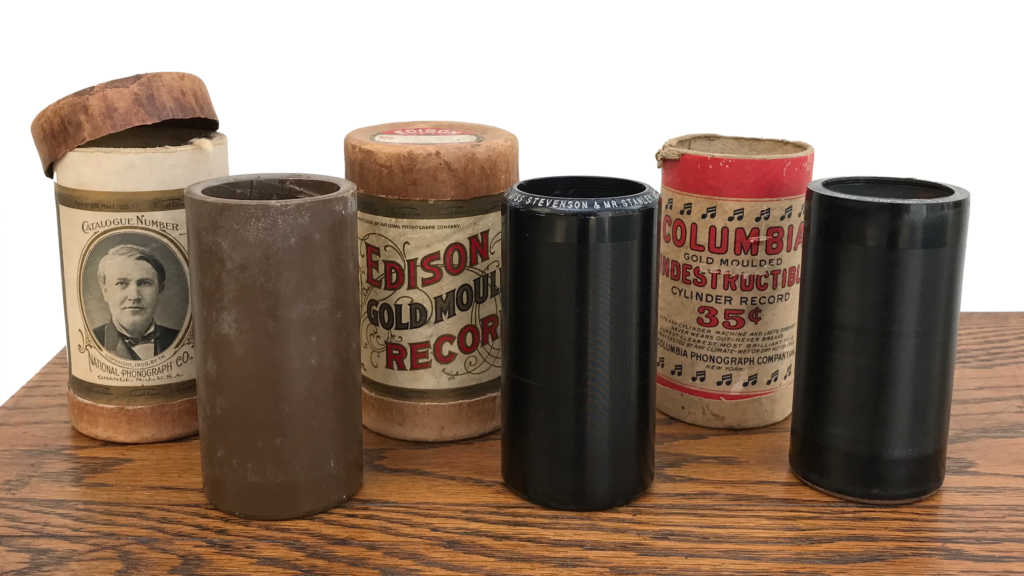
Two-minute cylinders. Early brown wax on left should be handled and played with extra care
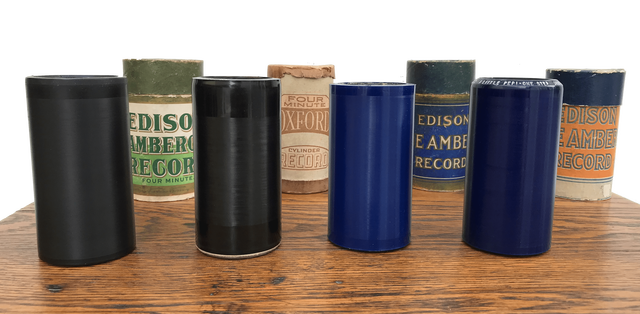
Four-minute cylinders. At left is a brittle wax Amberol; others are durable celluloid
In response to Victor’s Victrola, Edison eventually manufactured cylinder phonographs with concealed horns, called, “Amberolas,” which were sold until Edison ceased manufacturing all phonographs and records in 1929.
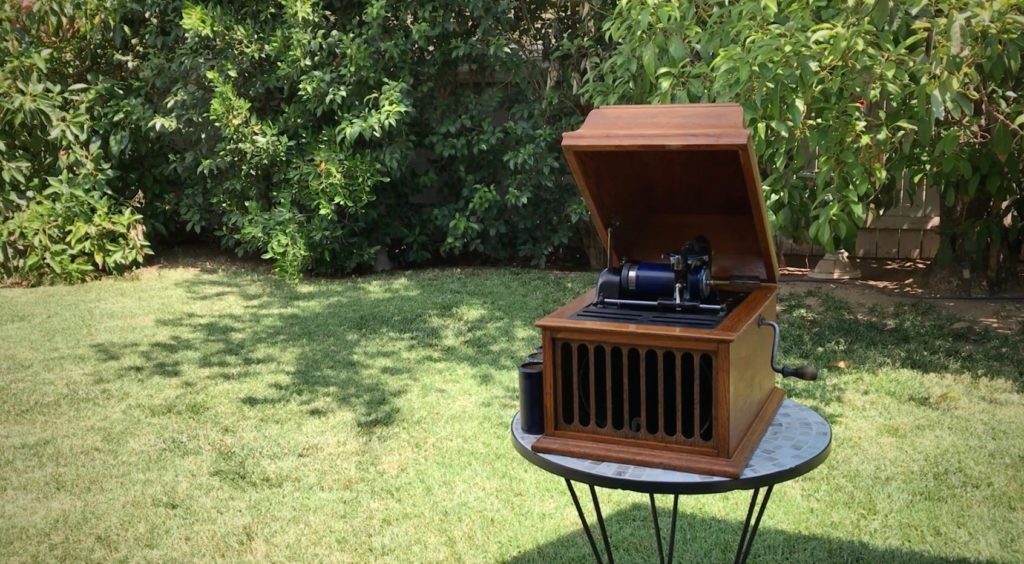
The small and somewhat portable Edison Amberola Model 30 debuted in 1915 and was made in vast numbers through the 1920s
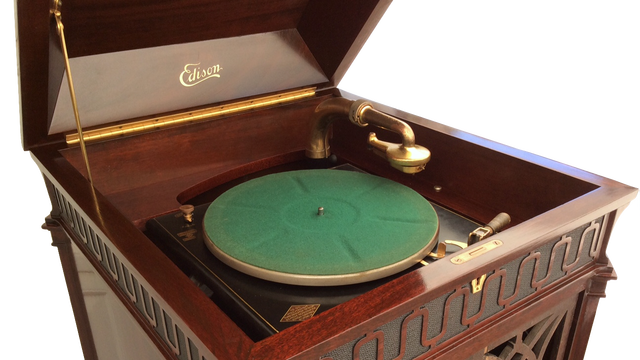
Because of the increased competition from disc phonograph manufacturers, Edison developed his own disc format to sell alongside his cylinder format. Unveiled in 1912, the Edison Discs, easily recognizable because of their nearly quarter-of-an-inch thickness, were technically superior to any other format available at the time. Edison Discs were so realistic that Edison held “Tone Tests” in which a singer would sing live, then mime to their own voice on a record, and the overwhelming result was that the audience couldn’t tell the difference.
Edison disc records, with very few exceptions, are NOT playable on Victrolas or other machines not made by Edison. Edison records are recorded vertically, meaning the sound recording is at the bottom of the groove. Victor records, on the other hand, are laterally recorded, meaning the sound recording is at the sides of the groove. The two formats are not compatible. Edison grooves are fine and easily damaged by a steel needle. Do not attempt to play Edison records unless you know your Edison machine is in good working order.
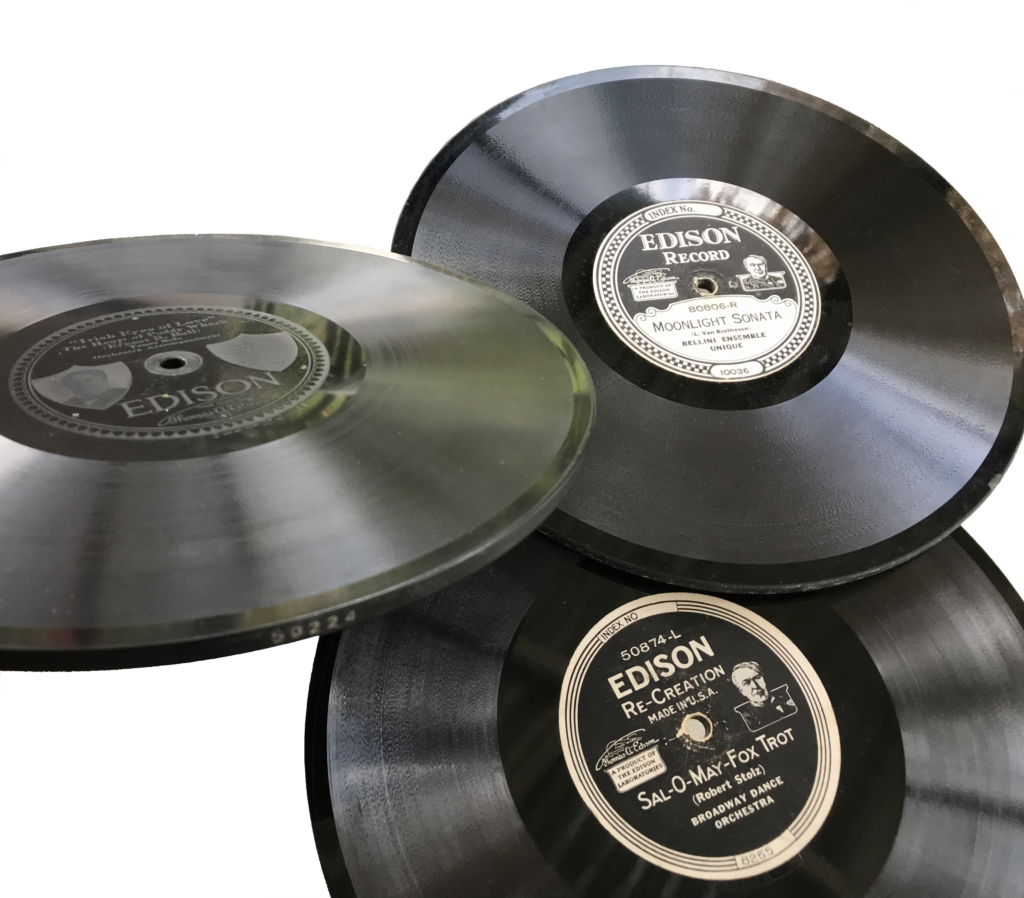
Edison Diamond Discs
Edison disc phonographs use a diamond stylus point that does not need changing like steel needles. Unfortunately these styli are often found worn, chipped, or missing, and replacement is the only remedy.
Columbia, one of the top three phonograph companies at the time (the others being Victor and Edison), made a vast number of both cylinder and disc phonographs. They also manufactured machines for other companies, which were labeled and sold under different names.
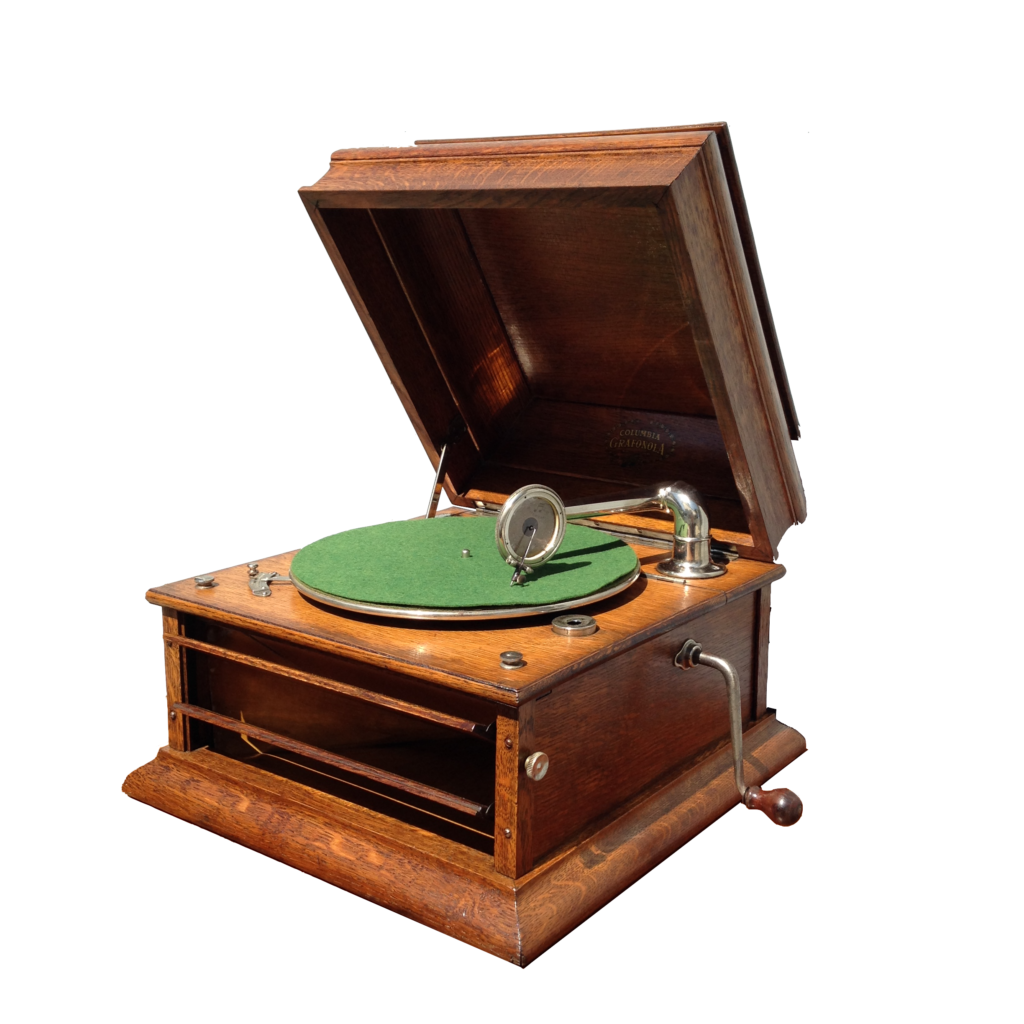
Typical Columbia Disc “Grafonola,” of the 1910s and early 1920s
After World War I, the economic boom, combined with the expiration of some phonograph patents, allowed a multitude of small manufacturers of both machines and records to pop up. Many of these machine manufacturers are known as “off brands.” Usually they are made up of generic mechanical parts and a cabinet made by a furniture manufacturer. Some are well-made, but most are average. Parts can be difficult to attain for these machines due to the relatively few produced compared to the other big manufacturers.
Prior to 1925, almost all recordings were made acoustically. Performers in a studio would sing or play into a horn attached to a recorder. The recorder was somewhat like a reproducer in that it had a semi-flexible diaphragm. The sound waves created by the performer would be directed down the horn and cause the diaphragm to vibrate. Attached to the diaphragm was a cutting stylus. This stylus would cut a groove in a wax master record and thus make a direct recording.
On one hand, acoustic records are a marvel. There are many very well-recorded selections to be found that can still impress the listener over a century later. Even so, the frequency range of acoustic recording was much more limited than what was soon to come. Around 1925, to improve slumping sales, Victor began using a method of recording using electric microphones. This changed the industry. These records, which suddenly had much greater fidelity packed in their grooves, required a whole new line of phonographs capable of playing them. Thus, the “Orthophonic” phonograph was born.
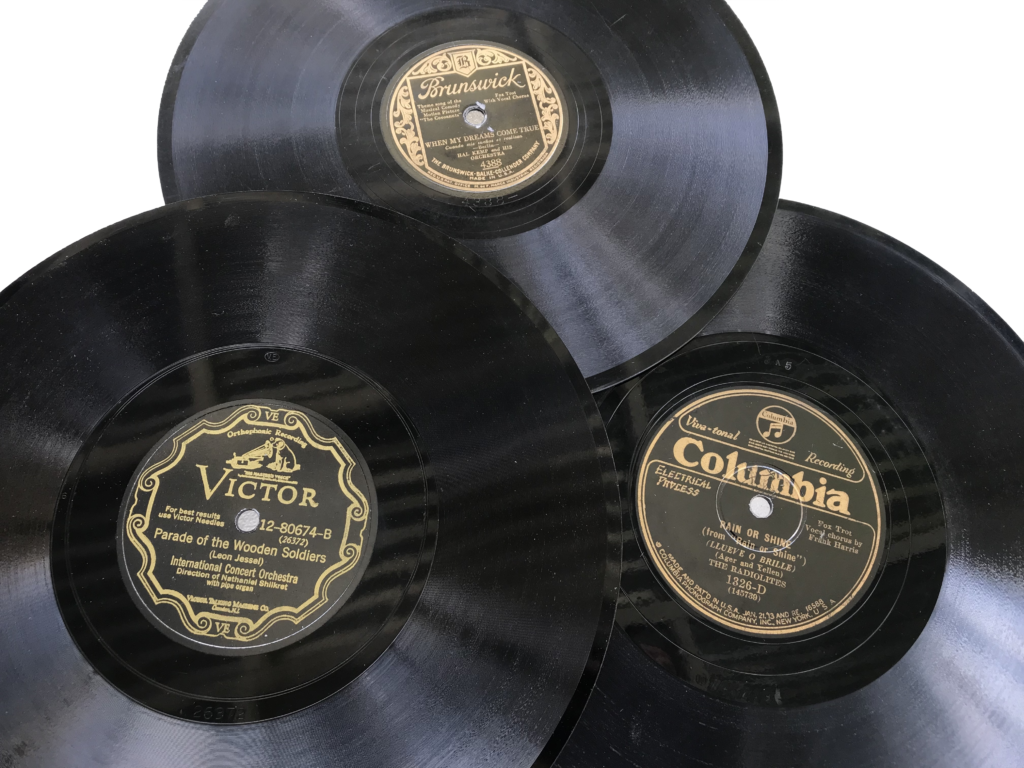
Early electrically-recorded 78s of the late 1920s
The Victor Orthophonic phonographs of the late 1920s are technically much advanced from their predecessors. They used more complex reproducers with thin metal diaphragms and greater sensitivity. Large machines, like the Victor “Credenza,” are capable of an impressive performance even today. While the records were made using an electrical process, the machines still used no electricity for sound reproduction.
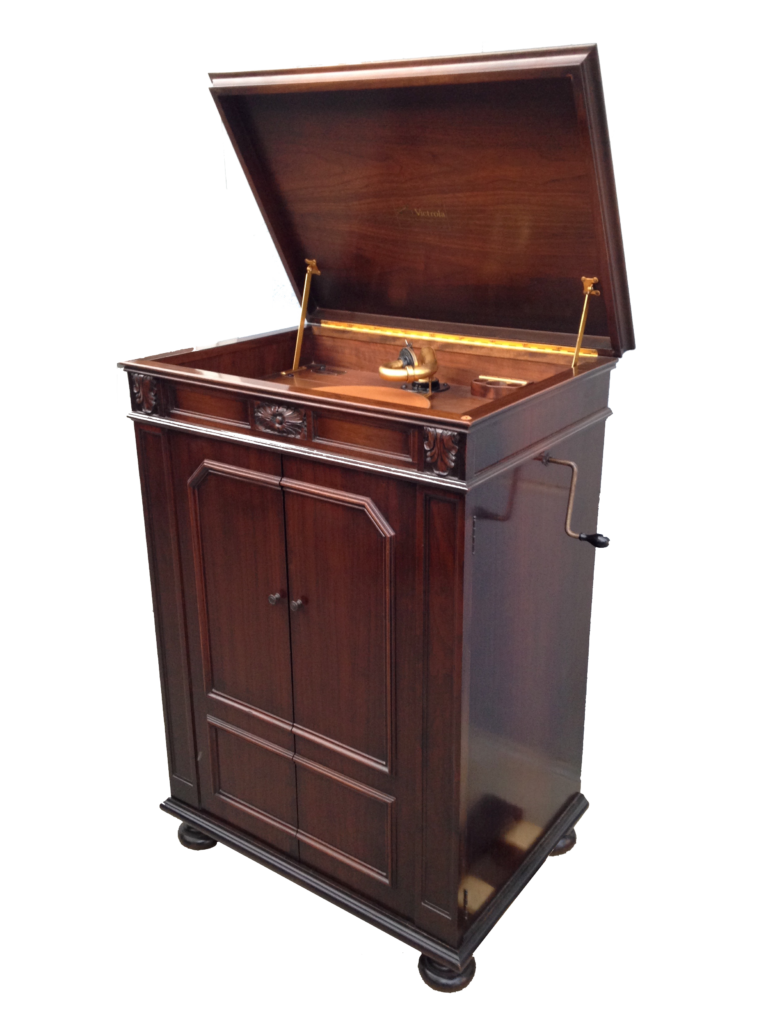
A Victor Victrola “Credenza,” 1925
Soon other companies began designing reproducers and machines to play the new electrically-recorded records. More record companies began using electrical processes to create better (and louder) records. The height of acoustic phonograph technology was effectively reached around this time.
Technology marched on, however, and even greater reproduction was to be had with electrical amplifiers. Through the 1930s, machines increasingly used electricity, often with the addition of a radio. The longest wind-up acoustic machines to survive were the portables, convenient for travel. These lingered as late as about 1960, but at this point 78 rpm records weren’t being made in any noticeable number.
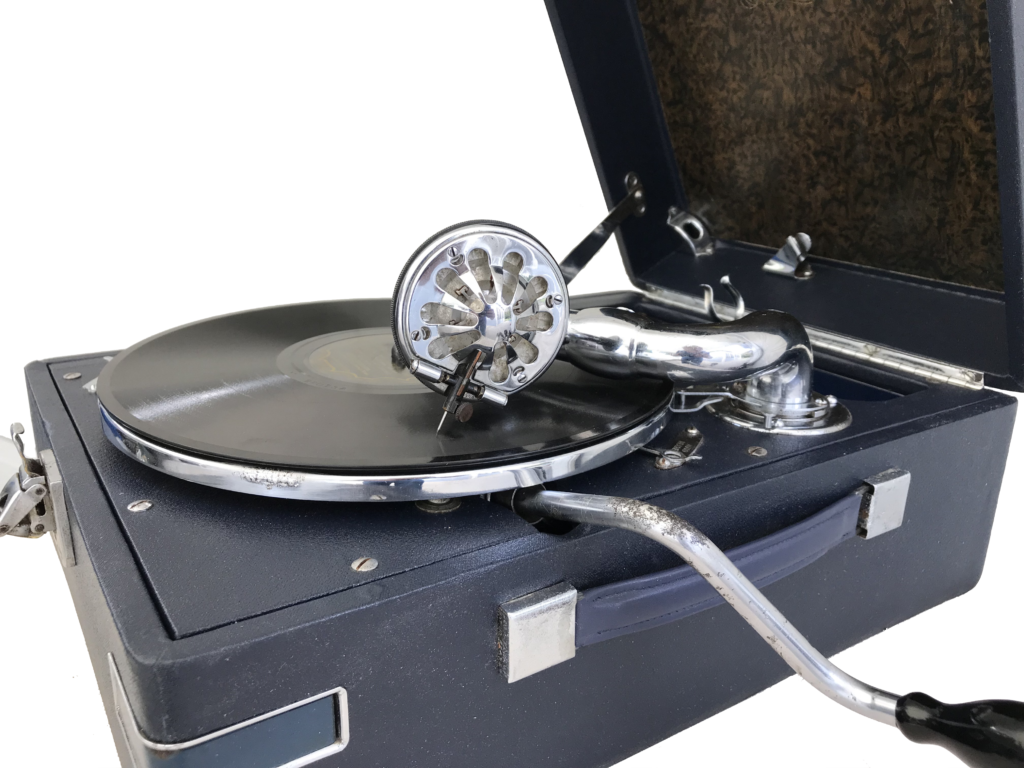
A British HMV model 102 portable gramophone.
All content, photos and videos on this website copyright John Banks 2020. Please do not republish them on your website or elsewhere without my explicit permission. Thank you.
